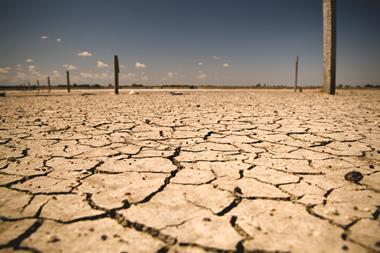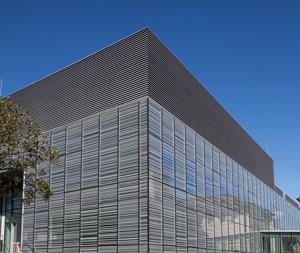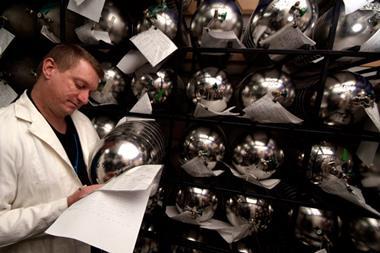Claims that cuts are politically motivated and short sighted as climate and environment programmes slashed
Australia’s research community is reeling from what have been described as short sighted and politically motivated cuts, outlined in the new conservative government’s first budget.
Only medical research emerges as a real winner, with a A$20 billion (£11 billion) fund by 2023. But ‘overall there will simply be less science research in Australia in three years time’, according to Les Field, science policy secretary at the Australian Academy of Science. Field says the government had ‘failed to realise that medical research needs underlying expertise in the chemical and physical sciences, and that support is being eroded’.
‘It’s an easy headline grabber,’ says Michael Borgas, secretary of the Commonwealth Scientific and Industrial Research Organisation (CSIRO) union, but he argues it ‘politicises’ research because the fund will be built up through a new A$7 consultation fee for seeing a doctor. The money will be ploughed into medical research once the fund reaches its A$20 billion goal.
‘There is no thought as to how to use the money: they don’t have any understanding of the science system,’ says Borgas. CSIRO – the largest government research laboratory – faces cuts of A$111.4 million. It will lose 420–500 staff in the next year. Coming on top of 300 previously announced redundancies, this means the organisation will shrink by around 20% in just two years.
Sleight of hand
Both Field and Borgas welcome an additional year’s funding for big infrastructure projects, such as the Australian Synchrotron and the Square Kilometre Array’s supercomputer. But a feature of the budget will see science funding redirected from one programme to another, so although CSIRO budgets will be supporting infrastructure, there will be less money for its scientists to use the facilities. But Field bemoans the short term approach the government is taking: ‘One has to work out what infrastructure you need and how to support it – and that transcends the lifetime of a government.’
Environment, climate change and renewable energy are all big casualties of the budget – most notably the intended abolition of the Renewable Energy Agency that will save A$1.3 billion, and the A$10 billion Clean Energy Finance Corporation. A$162.9 million will be cut from the Carbon Capture and Storage flagship, and a commitment to 1 million solar roofs has been withdrawn.
Abandoning carbon pricing will cost the Australian treasury A$20 billion, while the mining corporations will get A$13 billion in subsidies through diesel fuel rebates, asset depreciation rules and offsetting the costs of exploration says Victoria McKenzie-McHarg, climate campaign manager at the Australian Conservation Foundation.
‘Billions of dollars have been cut from clean energy programmes which were delivering jobs on the ground’. She argues these were positioning Australia to take advantage of its natural resources: ‘A great opportunity to change our economy has been squandered – the question is whether through willful ignorance or a fundamental misunderstanding.’
Fees quandary
From 2016, the university funding model is changing so that universities will be able to decide their own course fees. Universities will have to cover an 8.5% drop in funding compared with what was promised in last year’s budget – and one which already included stringent cutbacks. Changes to the higher education loan programme mean interest rates payable by students taking out the loans will be set at the higher 10 year bond rate, rather than inflation.
‘Universities are still trying to unpack the consequences of undergraduate fees, and trying to work out what the market will bear,’ says Field. Nor do universities yet know the impact of new fees for PhD and masters students. ‘Government support for science undergraduates has been hit hard, so universities will have to work harder to recover more money from science students,’ he says, ‘so it’s going to cost more to study science […] and that may mean people chose shorter degrees.’ Vocational and industry training has also been cut.
The Australian Research Council will have to find almost A$75 million in efficiency savings over the next three years, and A$92 million of its funding will be redirected towards research into tropical health and medicine, dementia and the Antarctic. However, the future fellowships scheme, which supports mid-career researchers will get A$140 million to continue.
As the main agency which supports science other than health and medicine, the success of grant applications is already just 20% says Field. Its settlement ‘will put Australia into a zone where funding for chemical research, for example, may not be available.’
The budget in numbers
Winners
A$20 billion for a medical research fund
A$140 million to continue mid-career fellowships
A$150 million for the National Collaborative Research Infrastructure strategy for 2015–16
Losers
CSIRO funding cut by A$111.4 million
Australian Nuclear Science and Technology Association cut by A$27.5 million
Institute for Marine Sciences cut by A$7.8 million
Cooperative research centres programme cut by A$80 million
Clean Technology innovation programme axed saving A$44 million
Innovation and commercialisation programmes cut by A$850m
Australian climate change science programme merged into new national environmental science programme and cut by A$21.7 million
Carbon capture and storage flagship cut by A$162.9 million
Ending of the water science research programme in 2016 saving A$10 million












No comments yet